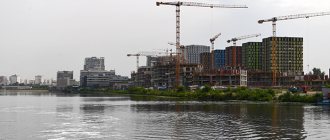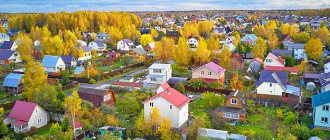The relatively young Russian mortgage market developed rapidly in 2020, all thanks to the coronavirus. The country's authorities have launched mortgages with a subsidized rate to support demand for housing and prevent failure in the construction industry amid the spread of COVID-19. The trick was a success, but now Russia may be facing a mortgage crisis. In recent months, experts and even some officials have repeatedly stated the risk of its development. At the same time, representatives of various government agencies began to actively deny this possibility. Whether this is a psychological defense mechanism, when the subject refuses to admit the existence of a problem, or a truly strong belief in the stability of the housing lending market, is not yet clear. Debt madness, lessons from the American crisis and the elusive mortgage bubble - in the material of Lenta.ru.
We've collected
The mortgage market in the crisis year of 2020 is indeed growing at a record pace - and participants in the housing lending market openly admit that this is happening primarily due to measures to support the construction industry, which were initiated by President Vladimir Putin. The main such measure is the launch of preferential mortgages for the purchase of apartments in new buildings. He announced the program in mid-April, and a couple of days later Russian banks began offering corresponding loan products - at an unprecedented 6.5 percent per annum.
2,7
trillion rubles
borrowed by Russians to buy housing in the nine months of 2021
In previous years, a rate of 10 percent was considered low, so the demand for “Covid” mortgages was high. Developers also came to the rescue, timely organizing remote sales of apartments and free taxi rides to sales offices - it was possible to buy housing even during the period of self-isolation. After its completion, a real rush began on the new buildings market. They bought mainly on credit - according to the Dom.rf financial institution, the share of mortgage transactions in apartment buildings under construction currently reaches 90 percent. A study prepared by Raiffeisenbank specialists showed that 59 percent of Russian millennials (people born after 1981 and before 1996) plan to purchase housing in the near future, of which 79 percent intend to take out a mortgage.
Photo: Valery Melnikov / RIA Novosti
According to preliminary estimates from Dom.rf, over the nine months of 2020, more than a million mortgage loans worth 2.7 trillion rubles were issued in Russia - almost the same as for the entire 2021. “If the development of the situation with the coronavirus pandemic does not require the introduction of strict restrictive measures, then this year Russians will issue more than 1.5 million loans worth 3.7 trillion rubles,” says the bank’s materials (available to Lenta.ru).
August has already officially become a record for the domestic mortgage market - then 148 thousand housing loans were issued for 375 billion rubles (data from Dom.rf and the Frank RG agency). The previous absolute record was set in July, when Russians took out mortgages worth 362 billion rubles.
“We see that the mortgage market has fully recovered from the negative consequences of the coronavirus pandemic,” states Dom.rf. There is not a word about how much the financial well-being of Russians has recovered and what the mortgage craze threatens.
Documentation
To re-register ownership of an apartment, you must prepare the following documents:
- A document confirming the right to an apartment (certificate, extract from the Unified State Register, agreement or other document on the basis of which the housing was purchased by the seller).
- An extract from the house register with detailed information about who was discharged, when, where and for what reason (you must carefully check whether anyone was discharged due to being in prison).
- If the sale affects the interests of children (they were registered in the apartment or are the owners), the consent of the guardianship and trusteeship authorities is required.
- Certificates of absence of debts for utility and other payments.
- A document confirming the legality of the redevelopment (if any).
- Consent of the second spouse to the sale and purchase of real estate.
- Appraiser's report.
How will we give back?
According to the international rating agency Moody's, the total number of mortgage borrowers in Russia in the fall of 2020 reached 7-10 million people. One could rejoice at the development of housing lending, but mortgage debt is growing against the backdrop of a clear decline in household incomes. Back in May, it became known that after the start of restrictive measures due to the pandemic, the salaries of half of the citizens decreased. Rosstat calculated that in the second quarter of 2021, household incomes fell by 8 percent after growing by 1.2 percent in the first quarter. In the first half of the year, the figure fell by 3.7 percent. It is expected that by the end of 2020 the decline will be 3 percent.
The total number of mortgage borrowers in Russia in the fall of 2021 reached 7-10 million people
In previous years, citizens also clearly did not shovel money: real disposable income fell continuously from 2014 to 2017 against the backdrop of a protracted crisis. Near-zero growth in the indicator was noted in 2021 (plus 0.1 percent). At the end of 2019, the income of Russians increased by 1 percent in annual terms. All the growth was obviously “eaten up” by the coronavirus and its consequences.
The logical question - how people will repay their debts to bankers - worries many experts. Among the officials, Deputy Minister of Finance Alexey Moiseev was the first to speak about the danger of expanding the preferential mortgage program. It. Moiseev pointed to the growing debt burden ratio (DBR) of borrowers, saying that approximately 40 percent of Russians cannot afford a home loan even at 0 percent.
Photo: Valery Melnikov / RIA Novosti
“The real disposable income of Russian citizens has been going down since 2014, while the issuance of mortgages is growing (as are ruble prices for real estate). The perfect combination for the mortgage crisis. <…> There has not yet been a mortgage crisis in Russia. In 1998, there were practically no mortgages; in 2008, there was only a light version (“currency mortgages”). But there is a first time for everything,” wrote economist, associate professor at RANEPA Sergei Khestanov on his Facebook page on September 30.
Two weeks later, he identified the main catalyst for the development of the mortgage crisis in Russia - the increase in the number and proportion of borrowers with low financial capabilities. Khestanov said that by now the vast majority of people who planned to buy real estate with a mortgage have already done so. “Preferential mortgages encourage those who were not planning to do so before to buy a home,” he emphasized. According to the economist, housing loans have now become available to people with low incomes. Many of them will not be able to make payments regularly in the future.
A few days later, the Central Bank recalled the falling income of Russian mortgage holders. Deputy Chairman of the bank Olga Polyakova said that it is necessary to take a very balanced approach to the growth of the debt burden of individuals. Despite all the warnings, the preferential mortgage program was extended until July 1, 2021 - a corresponding decree was signed by Prime Minister Mikhail Mishustin.
The Russian government may need to do something to prevent a bubble from forming.
Scott Johnson, Bloomberg economics expert
It is interesting that the Russian authorities were warned about the need to take measures to avoid a housing credit failure not only by domestic but also foreign experts, in particular, the representative of the United States, the “creator” of the largest mortgage crisis in the history of mankind. American Bloomberg economics expert Scott Johnson softly stated that Russia “may need to do something to prevent the formation of a “bubble” (mortgage bubble - approx. Lenta.ru
»)».
What to remember
- A mortgage at 6% (and in the Far Eastern Federal District - at 5%) can be taken out by a citizen of the Russian Federation who has a child born from January 1, 2021 to December 31, 2022. And it doesn’t matter what number it is.
- You can buy an apartment or a finished house from a legal entity. Or build your own - but also with the involvement of a legal entity or individual entrepreneur. Secondary education under the program is available only in rural areas of the Far Eastern Federal District.
- You can take up to 6 million, and in Moscow, St. Petersburg and their surrounding areas - up to 12. Down payment - 15%.
- The preferential rate is valid for the entire term of the mortgage.
American style emptiness
In the United States, the mortgage crisis, which triggered the financial and then global economic crises, broke out in 2007. Then the number of non-payments on mortgage loans sharply increased - mainly those issued to “weak” borrowers (with a low level of creditworthiness). At the same time, the share of such loans increased greatly in 2004-2006 - mortgages were popular, and banks issued them, if not to everyone, then clearly without any particular strictness. Most potentially “bad” loans were issued at a floating interest rate.
Photo: Mikhail Japaridze / TASS
On the eve of the crisis, the cost of servicing “floating” loans began to rise, monthly payments grew, and accordingly, more and more people began to make late payments or stop paying altogether. At the same time, housing prices fell in the country, which complicated the process of refinancing a mortgage. Mortgage-backed securities depreciated at an unprecedented rate. The bankers were later accused of knowingly issuing mortgages to uncreditworthy individuals, thereby jeopardizing the value of the mortgage bonds and the welfare of their holders.
The peak of evictions of mortgage bankruptcies in the United States occurred in 2009-2010; The Economist magazine in 2009 estimated the number of alienations of residential real estate at 9 million per year (versus a million in “normal” years). To reduce the scale of the social crisis, public and private programs to support homeowners were launched. In addition, the main players in the American mortgage market continually introduced moratoriums on the alienation of housing. Despite this, empty houses have become commonplace.
After the mortgage fiasco, banks in the US began to evaluate potential borrowers very strictly
Support measures helped only a part of the borrowers, but the lesson was learned: the volume of mortgage debt in the United States in the second quarter of 2019 reached $9.4 trillion, exceeding the “crisis” figure of 2008, but its quality was recognized as high - after the mortgage failure, banks began evaluate potential borrowers very strictly, and mortgage defaults have become rare. The ideal credit picture was spoiled by the coronavirus - at the end of the second quarter of 2020, the percentage of overdue mortgages in the United States was 8.2 percent, having increased by four percentage points over three months.
Basic building requirements
The list of the most important requirements, which you must familiarize yourself with, contains several points:
- The building must not have been erected before 1970.
- The degree of wear of a stone or concrete building should not exceed 50-70%. For wooden houses, wear within 40% is acceptable.
- It will not be possible to get a mortgage if the house is registered in the renovation program, major repairs or demolition of the building are planned.
- The location of the property must fall within the coverage area of the given credit institution. Some banks are ready to allocate funds for the purchase of real estate in other regions.
- The house should not have obvious structural defects (distortions of ceilings or walls).
- You cannot get a mortgage for dilapidated houses that need serious repairs.
It will not be possible to obtain a mortgage for a house located within a protected area or included in the list of historical, architectural or cultural monuments.
A townhouse, country house or private house must have a year-round entrance and all necessary communications. There should be other residential buildings nearby. It is necessary to have a bridge (if there is a river), a full-fledged road.
In addition to technical characteristics, the infrastructure of the surrounding area is important. The bank pays attention to all the little things that can affect the liquidity and final cost of residential real estate. Developed local infrastructure is a good indicator.
When choosing a house, you need to make sure that all technical documentation is available. The object must be registered with the state cadastral register.
Banks have special requirements for houses under rural mortgages. You need to familiarize yourself with the list of settlements where you can purchase a house with a mortgage.
We have our own way
In Russia, the total volume of “bad” mortgage loans by the fall of 2020 reached 76.68 billion rubles, an increase of almost 5 percent over the year, CIAN calculated. According to analysts, the share of overdue mortgages is stable - currently in the country as a whole it amounts to 0.9 percent of the total debt on housing loans. The primary market accounts for 22 percent of bad mortgages. “Despite the record volumes of loan debt, their quality remains at a high level,” experts say.
Photo: Roman Pimenov / TASS
According to the Central Bank, the volume of overdue mortgages by September amounted to 0.8 percent (69.73 billion rubles). The regulator reacts with restraint to statements about a possible mortgage crisis in Russia. “There is currently no risk of bubbles emerging in individual regional mortgage lending markets due to the implementation of preferential mortgage programs,” the Central Bank said in an analytical note published on October 7. — A significant portion of mortgage housing loans are still issued on standard terms. Capital regions remain leaders in obtaining preferential mortgages. Despite the fact that the terms of preferential mortgages are as favorable as possible, the influence of such factors as the dynamics of population income and demographic characteristics remains.”
The Ministry of Construction said back in September that “the government would not subsidize something that would lead to default.” Deputy Minister Nikita Stasishin, speaking about the threat of a mortgage crisis, noted that the Russian government employs people “with higher education, and sometimes more than one.” A month later, his boss, the head of the ministry, Vladimir Yakushev, used a similar argument - the main regulator of the mortgage market in the country is the Ministry of Finance, and “quite serious professionals work there,” the official pointed out.
77
billion rubles
constitutes the total volume of “bad” mortgage loans in Russia
The risk of a mortgage bubble was also commented on in the Kremlin - presidential press secretary Dmitry Peskov said that the situation in the housing lending market is being closely monitored. “There is no doubt that the government is watching this very closely,” Peskov emphasized. He assured that the authorities will not allow mortgage bubbles to arise.
The optimism of market experts is better justified. “At the moment, I assess the likelihood of a full-fledged mortgage crisis developing in Russia as low,” Ilgiz Baymuratov, vice president of the international audit and consulting network FinExpertiza, told Lenta.ru. — This is due to both the relatively low share of mortgage instruments in the Russian banking system and the generally relatively good level of solvency of existing borrowers. The mortgage crisis could potentially arise as a result of a sharp and significant decrease in the level of income of the population, which should not happen given the authorities’ promises not to introduce a full-fledged lockdown.”
Photo: Anton Belitsky / Kommersant
The United Credit Bureau (UCB) also believes that it is premature to talk about a crisis: according to analysts, in Russia “only” 0.92 percent of the mortgage portfolio of banks is overdue (during the American crisis the overdue rate reached 12.1 percent). “In 2019, banks had a high appetite for risk, so when the first wave of coronavirus hit the Russian economy at the beginning of this year, some clients were unable to continue paying their mortgages,” said Artur Aleksandrovich, OKB’s CEO. — However, the increase in the level of delinquency did not cause any systemic risks, and banks became more cautious. We now see that mortgage loans issued after April are of significantly higher quality than a year ago. That is, banks began to lend to more reliable borrowers.”
The furious growth of the Russian mortgage market is explained by the “low base” effect (a small share of mortgage loans in the country’s GDP), believes Nikolai Alekseenko, General Director of the Rating Agency for the Construction Industry (RASK). He also does not see the prerequisites for the onset of a crisis. “We are missing a key element of the crisis - an oversupply that can bring down prices on the real estate market,” Alekseenko said. Rusipotek allowed an increase in the number of overdue loans, but not the formation of a mortgage bubble.
In the golden mean is former State Duma deputy, chief researcher at the Central Economics and Mathematics Institute of the Russian Academy of Sciences, Ivan Grachev, who in the 1990s participated in the development of laws on mortgages and mortgage-backed securities. “We can estimate that Russia is actually facing a mortgage crisis, but it still won’t be catastrophic,” the expert believes. — From the point of view of the country’s economy, this will generally be a fairly insignificant event. However, it is very significant from the point of view of many tens of thousands of families who will fall into default circumstances.” Grachev does not recommend taking out a mortgage with a down payment of less than 30 percent and without “monthly family income in the amount of the cost of one square meter of housing.”










